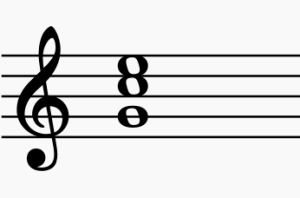Understanding chord inversions can offer versatility and richness to your musical compositions and performances. Let’s explore how inversions can elevate your piano playing and unravel their significance.
What are Chord Inversions?
Chord inversions, simply put, are different ways of arranging the notes of a chord. A chord consists of three or more notes played simultaneously, typically consisting of the root, third, and fifth intervals of a scale (a two-note chord is called a partial chord, or dyad).
When these notes are rearranged, with a note other than the root serving as the lowest note, it creates a chord inversion.
Why Learn Chord Inversions?
Smooth Transitions
Chord inversions allow for smoother transitions between chords, reducing the need for large hand movements and creating a more seamless flow in your playing.
Harmonic Variety
By experimenting with inversions, you can add variety and colour to your music. Different inversions evoke different moods and emotions, allowing you to express yourself more fully through your playing.
Voice Leading
Chord inversions facilitate smoother voice leading, where individual notes within chords move to the nearest notes in the next chord. This creates a more connected and melodic sound.
Expanded Range
Inverting chords allows you to explore different ranges of the piano keyboard, enabling you to create a richer and fuller sound.
How to Construct Chord Inversions
Let’s take a look at a basic chord, such as the C major chord (C-E-G), and explore its inversions:
- Root Position:
In its root position, the C major chord has the root note (C) as the lowest note.
- First Inversion:
To create the first inversion of the C major chord, move the root note (C) up an octave so that the third note (E) becomes the lowest note. The first inversion of the C major chord is therefore E-G-C.
- Second Inversion:
To create the second inversion, move the lowest note (E) up an octave, so the fifth note (G) becomes the lowest note. The second inversion of the C major chord is G-C-E.
Practicing Chord Inversions
- Start Slowly:
Begin by practicing chord inversions slowly, focusing on accuracy and finger placement. Gradually increase your speed as you become more comfortable with the inversions. - Play Along with Songs:
Choose your favourite songs and practice playing their chords using inversions. This will help you internalise the concept of inversions while enjoying the music you love. - Experiment:
Don’t be afraid to experiment with different inversions and chord progressions. Explore how different inversions sound together and how they can be used to create tension and resolution in your music.
Conclusion
Mastering chord inversions is an essential skill for any pianist looking to elevate their playing. By understanding the significance of inversions and practicing their construction, you can add depth, variety, and richness to your music. So, dive in, experiment, and let chord inversions take your piano playing to new heights!
